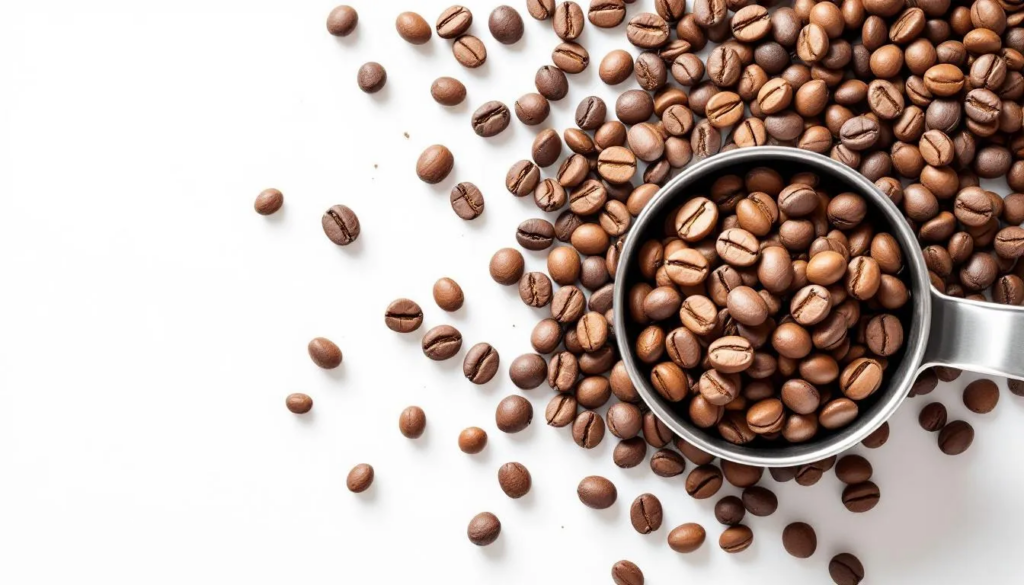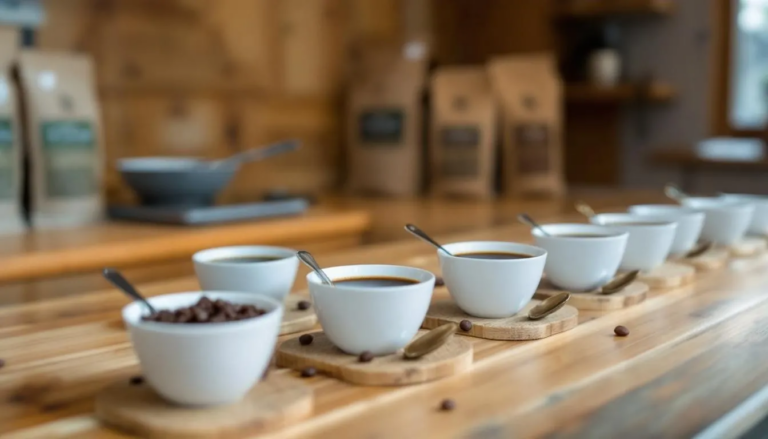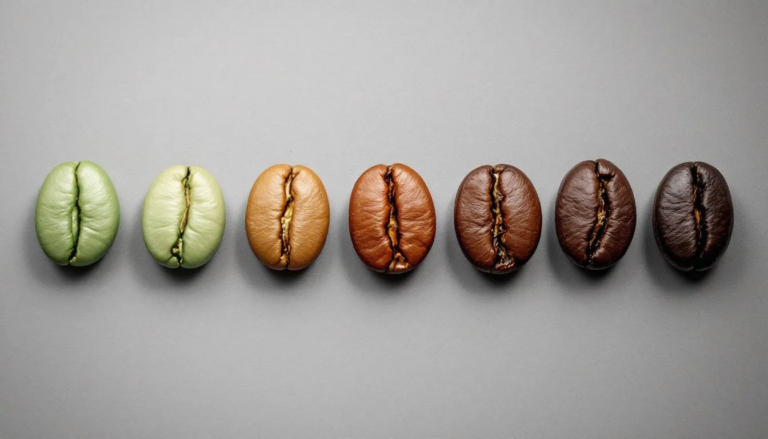Typically, you need 10 grams of coffee beans, or about two tablespoons, for a 6-ounce cup of coffee. This article explains how many coffee beans per cup can vary based on grind size, brewing method, and personal preferences, which can modify this amount.
Key Takeaways
- For a 6-ounce cup of coffee, use approximately 10 grams of coffee beans, or about two tablespoons, to achieve a medium strength brew.
- The grind size affects the amount of coffee needed: coarser grinds require fewer beans for flavor extraction, while finer grinds need more beans for a stronger taste.
- The ideal coffee-to-water ratio varies by brewing method, with the ‘golden ratio’ being 1:15 to 1:18, ensuring optimal flavor extraction and consistency in every cup.
Determining the Number of Coffee Beans Per Cup
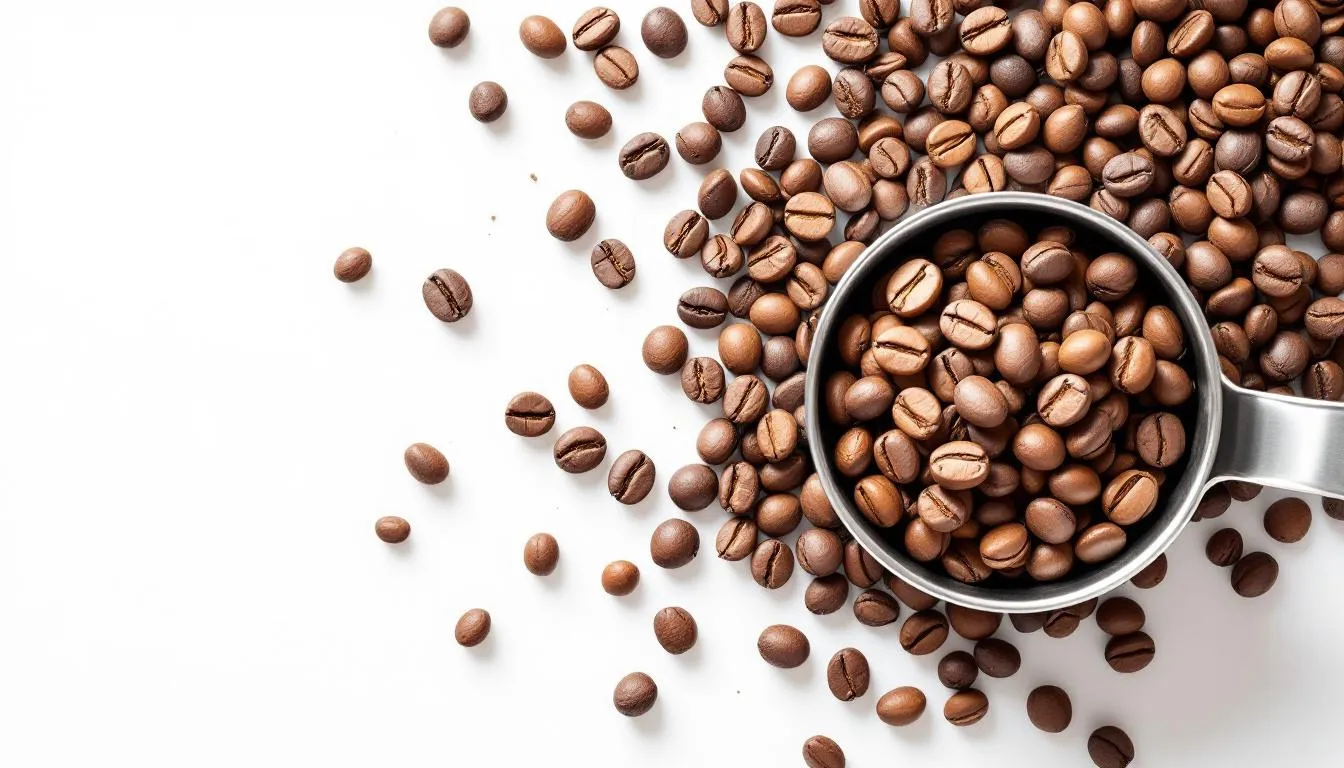
The number of coffee beans you need per cup is influenced by several factors, including the variety of beans, the processing method, and your brewing equipment. Generally, it takes approximately how many coffee beans to produce one standard cup of coffee. This number can vary based on the specific characteristics of the beans and the desired strength of your brew.
The Basic Measurement
Coffee enthusiasts often wonder about the ideal amount of coffee beans to use for brewing a single cup. This question is one of the most frequently asked among them. The simple answer is that for a 6-ounce cup, you should use about 10 grams of coffee beans, which is approximately two tablespoons of ground coffee. This measurement ensures a medium-strength brew that most people will find enjoyable.
A digital kitchen scale helps you measure coffee beans accurately, providing consistency in each cup. Even slight variations in the amount of coffee can significantly impact the flavor and strength of your brew.
Impact of Grind Size on Quantity
The grind size of your ground coffee beans plays a pivotal role in determining the quantity needed for your brew. A coarse grind, recommended for brewing methods like French Press and pour-over, requires fewer beans to achieve optimal flavor. On the other hand, a finer grind, used for espresso machines, results in a stronger coffee and requires more beans. The grind size must be appropriate for the brewing method to achieve the best flavor extraction and coffee strength.
Fine-tuning the grind size helps adjust the strength of your coffee. Coarser coffee grinds produce a milder flavor, whereas finer grinds result in a more robust and intense brew.
Adjusting for Personal Taste
Ultimately, the perfect cup of coffee is a matter of personal taste. While general guidelines, such as the golden cup standard, are helpful, many factors in brewing coffee experimentation with different cups is key to finding your ideal brew.
Fewer coffee beans create a milder flavor, while more coffee bean yield a stronger coffee. Adjusting the quantity to suit your taste helps you find the perfect balance of strength and flavor.
Understanding Coffee Measurements
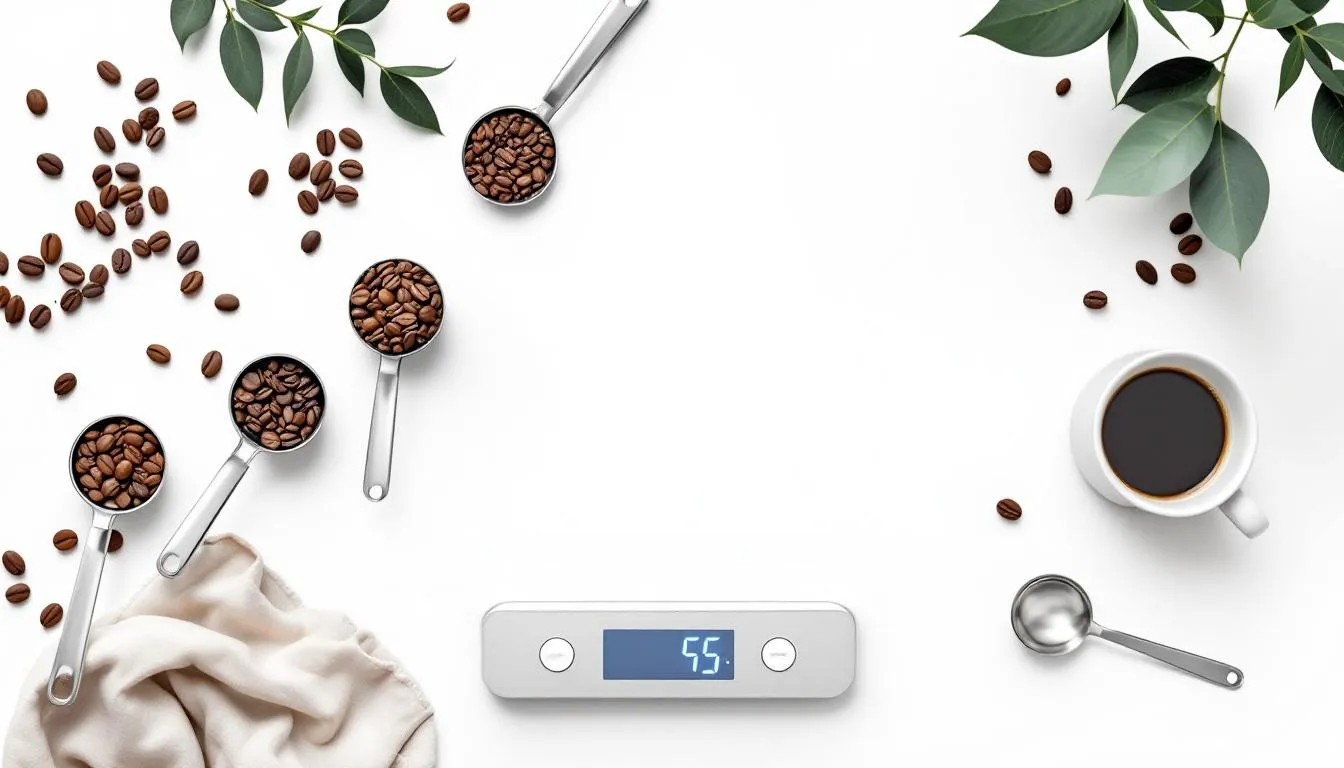
Understanding coffee measurements is crucial for brewing the perfect cup. The Specialty Coffee Association recommends specific guidelines to ensure optimal flavor. Common coffee measurements include grams and how many tablespoons of coffee, with the general guideline being 15 to 30 grams of coffee per 6-ounce cup, or using coffee scoops for convenience.
Accurate measured measurements ensure consistent flavor and strength in your coffee.
Grams vs Tablespoons
Measuring coffee beans in grams is more accurate than using tablespoons because:
- Weight can vary with grind size and packing, leading to inconsistencies.
- One tablespoon of coffee is approximately 15 grams, but this can vary depending on how the coffee is ground and packed. For instance, you might wonder how many grams of coffee are needed for your brew.
- For example, 30 grams of coffee translates to 2 tablespoons, highlighting potential discrepancies in measurement.
Using grams to measure coffee beans eliminates discrepancies, ensuring consistent flavor and strength in each cup. Accurate measurements of the same amount are key to achieving the perfect coffee every time.
Using a Digital Kitchen Scale
A digital kitchen scale is the recommended tool for measuring coffee grounds by weight. It ensures precise measurement, helping each brew meet your taste preferences. A digital kitchen scale guarantees accurate measurements, leading to consistent brewing results and enhancing your coffee drinking experience.
Coffee to Water Ratio
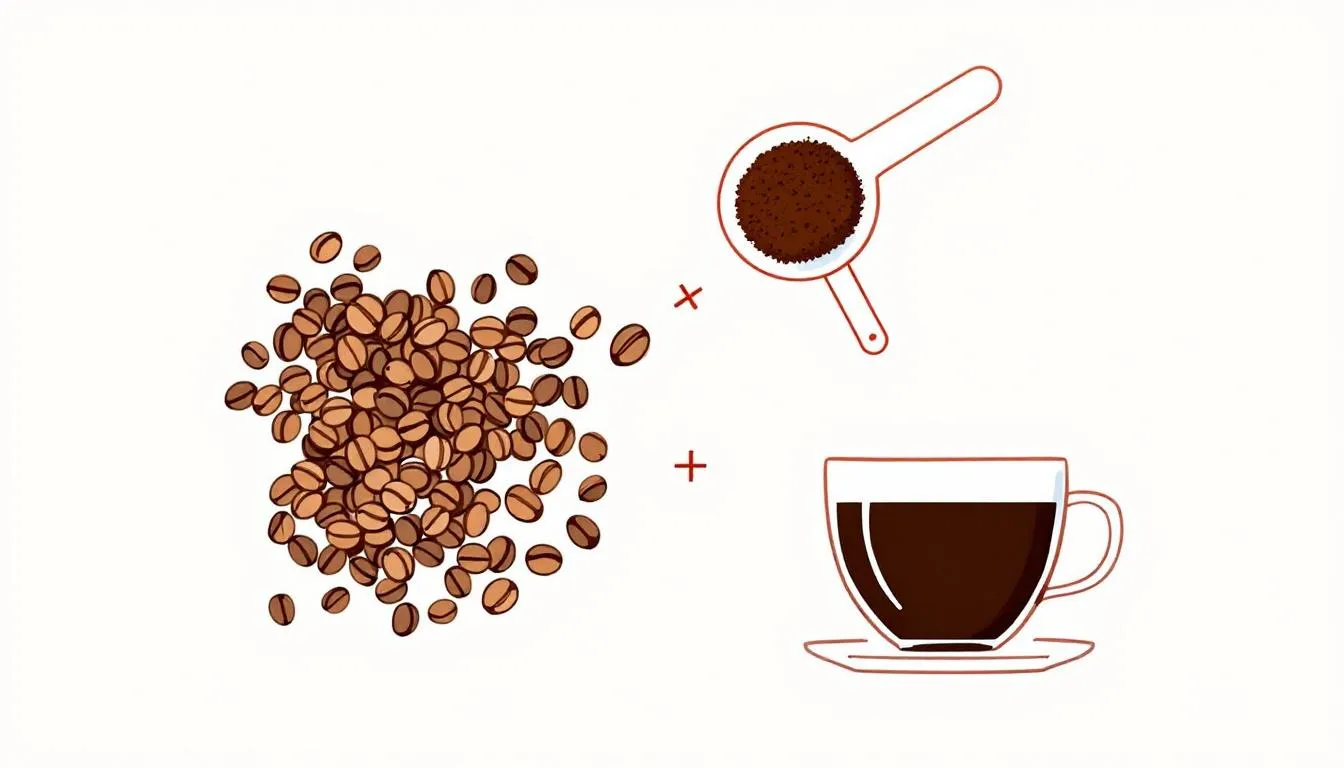
The coffee-to-water ratio is key to maximizing flavor. One cup holds 12 ounces, requiring how much water temperature for brewing.
The coffee-to-water ratio significantly impacts flavor and strength, with a balanced ratio ensuring a consistent, enjoyable cup.
The Golden Ratio Explained
The golden ratio for coffee brewing is generally recognized as 1:15 to 1:18, meaning one gram of coffee for every 15 to 18 grams of water. This ratio provides the perfect balance for optimal extraction, allowing the coffee to develop its full range of flavors. Measuring coffee beans in grams maintains the ideal ratio, eliminating discrepancies from grind size and density variations.
For making drip coffee, a common measurement is about 20 grams of coffee for every 320 grams of water. Similarly, a typical recommendation for French Press is to use about 15 grams of coffee per 250 grams of water.
Adjusting the Ratio for Different Brewing Methods
Different brewing methods require specific adjustments to the coffee-to-water ratio. For instance, the golden ratio for French Press is typically around 1:12 to 1:16, enhancing its bold flavor. Espresso machines, on the other hand, utilize a much stronger ratio of 1:2, producing a highly concentrated brew.
Cold brew coffee requires a coarser grind and a longer steeping time, with a coffee-to-water ratio between 1:5 and 1:8 for a robust concentrate. Tailoring the ratio to the brewing method helps you achieve the perfect brew each time.
Roast Level and Coffee Strength
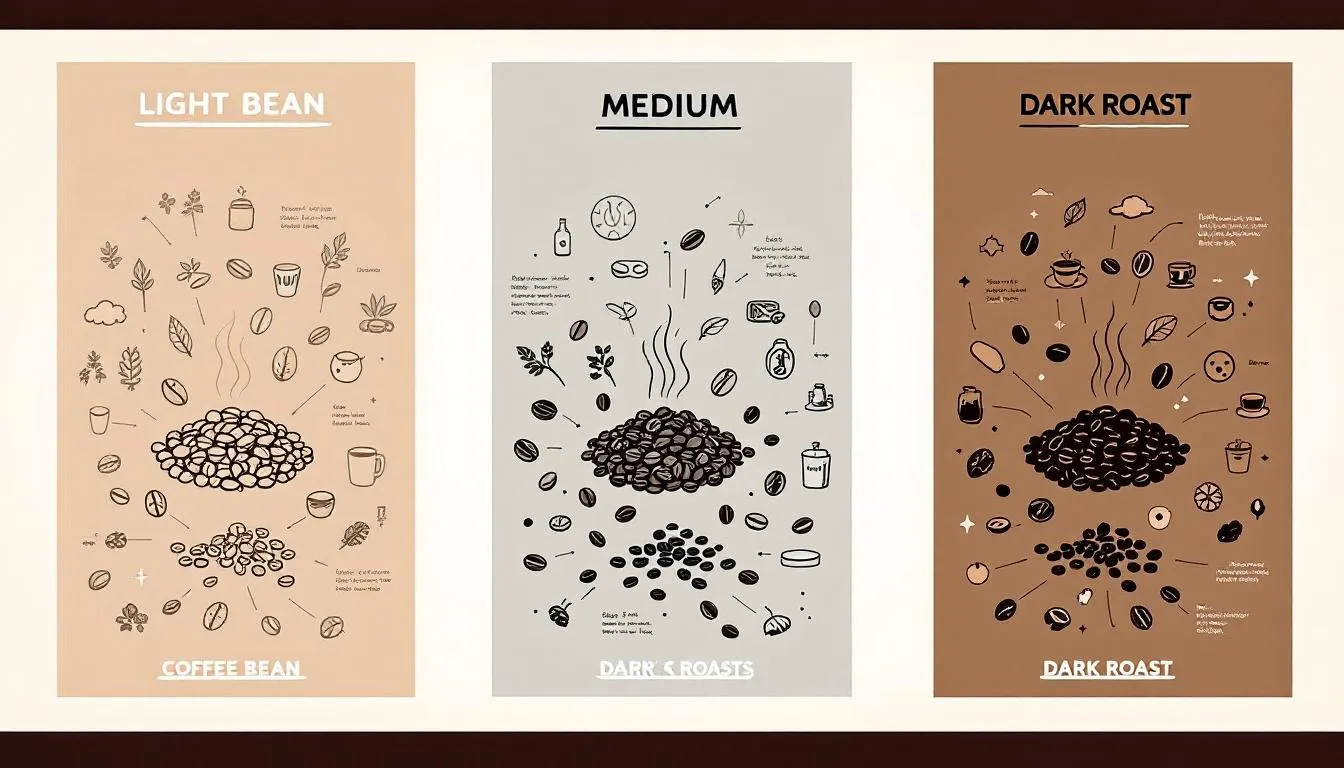
Roast levels dramatically impact coffee flavor and strength, with the body of coffee—its weight, mouthfeel, and texture—varying by roast level.
Robusta beans produce bold, bitter flavors, while Arabica beans are smooth and sweet.
Light, Medium, and Dark Roasts
Different roast levels highlight various bean characteristics:
- Light roasts are favored for their brightness and complex flavors.
- Medium roasts offer a balance of strength and nuanced flavors.
- Dark roasts provide a rich and bold taste.
Choosing the right roast is important for your preferred strength and flavour.
Matching Roast Level to Personal Preference
Choosing a coffee roast level often depends on personal taste. If you prefer bright and complex flavors, light roasts are ideal. For those seeking rich and bold tastes, dark roasts are the way to go.
Medium roasts are a great option for those looking for a balance between strength and flavor.
Brewing Methods and Their Bean Requirements
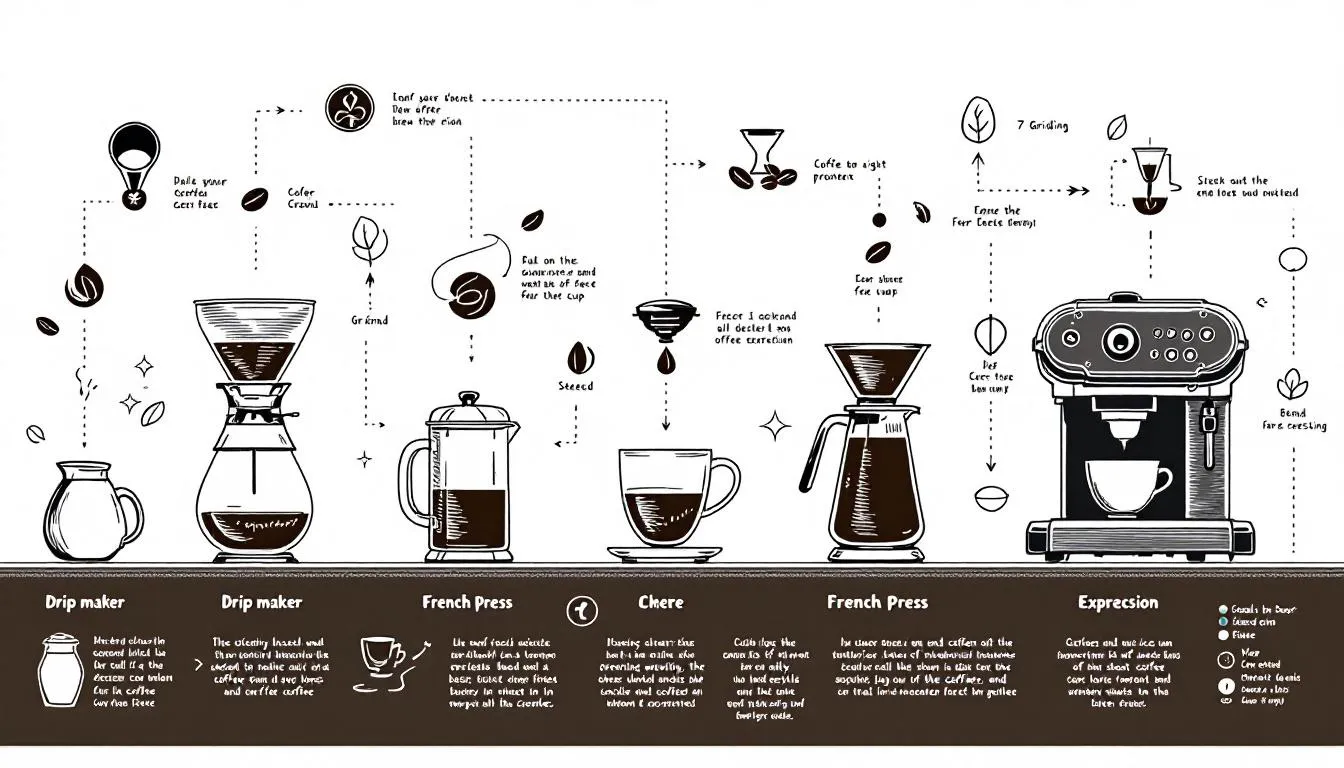
Brewing methods require different amounts of coffee beans. The ideal coffee-to-water ratio for drip coffee typically ranges from 1:16 to 1:18, ensuring optimal extraction and enhancing the coffee drinking experience.
Drip Coffee Makers
For drip coffee makers, a medium grind size is recommended, roughly the texture of table salt. The coffee-to-water ratio for drip coffee makers is typically between 1:14 and 1:16, ensuring a balanced and flavorful cup.
French Press
French press coffee is brewed best with a coarse grind, similar to sea salt, and a coffee-to-water ratio of 1:12 to 1:16. This method enhances the bold flavor of the coffee, making it a favorite among coffee enthusiasts.
Espresso Machines
For espresso brewing, a typical coffee-to-water ratio is 1:2, producing a highly concentrated beverage. A double espresso requires 14 grams of coffee beans, highlighting the precision needed for this brewing method.
Cold Brew
Cold brew coffee typically requires:
- A coarser grind
- A coffee-to-water ratio between 1:5 and 1:8 for a robust concentrate
- An extraction time much longer than hot coffee, usually between 12 to 24 hours, allowing the coffee to develop a smooth and rich flavor.
Practical Tips for Consistent Flavor
Consistent flavour and strength in strong coffee demand attention to detail. Accurate measurements ensure quality brews every time.
Here are practical tips to maintain consistency.
Proper Storage of Coffee Beans
Coffee beans start to lose their optimal flavor approximately a month after roasting due to exposure to air. To maintain freshness, store your coffee beans in airtight containers in a cool, dark place. Purchasing smaller batches of coffee can also ensure that you always have fresh beans on hand.
Maintaining Equipment
Regularly cleaning coffee makers and grinders prevents oil and residue buildup, maintaining flavor. Descaling machines and cleaning grinders ensure quality coffee.
Measuring Tools and Techniques
A digital kitchen scale ensures accurate measurement of coffee beans, providing uniformity in each brew. A standard coffee scoop ensures accurate measurements are key to consistent, quality coffee, making every cup as good as the last.
Summary
Summarizing the key points discussed in the blog post, achieving the perfect cup of coffee involves understanding the right amount of coffee beans per cup, the importance of grind size, and personal taste preferences. Accurate measurements, proper storage, and regular equipment maintenance all contribute to consistent flavor and strength in your coffee.
By applying these principles, you can transform your daily coffee routine into a delightful experience, ensuring that every cup you brew is perfect. So go ahead, experiment with different measurements, ratios, and brewing methods to find your ideal brew.
Frequently Asked Questions
How many coffee beans are needed for one cup of coffee?
You need about 70 roasted coffee beans to make one cup of coffee.
What is the golden ratio for coffee-to-water?
The golden ratio for brewing coffee is typically between 1:15 and 1:18, which means for every gram of coffee, you should use 15 to 18 grams of water. This balance can enhance the flavor and overall experience of your coffee.
How does grind size impact the quantity of coffee beans needed?
Grind size significantly impacts the quantity of coffee beans needed, as a coarse grind requires fewer beans, while a fine grind necessitates more to achieve a similar strength in flavor. Adjust your grind size based on how strong you want your coffee to be.
Why is it important to use a digital kitchen scale for measuring coffee beans?
Using a digital kitchen scale is crucial for achieving precise measurements of coffee beans, which ensures that you maintain consistent flavor and strength in every cup. This attention to detail can elevate your brewing experience significantly.
How should coffee beans be stored to maintain freshness?
To maintain the freshness of coffee beans, store them in airtight containers in a cool, dark place. This helps preserve their flavor and aroma.
